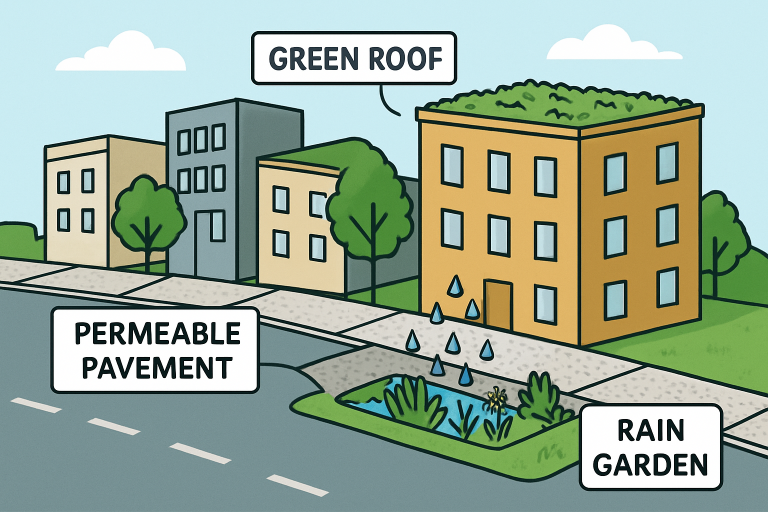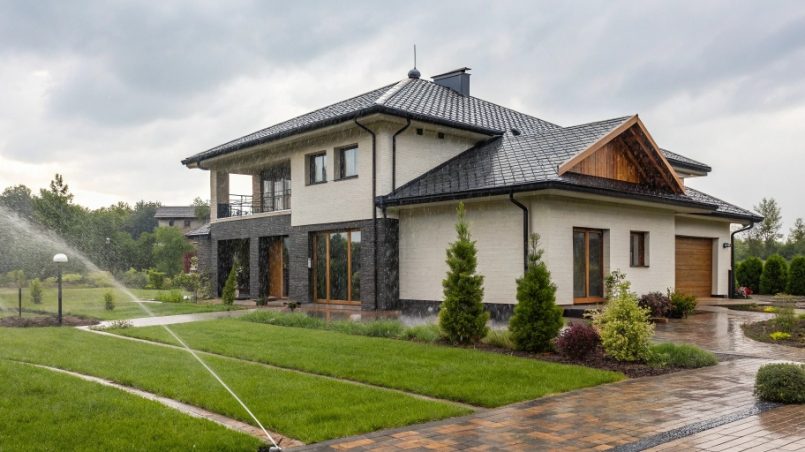From smart sensors to predictive analytics and sustainable building methods, these advancements not only help detect or prevent water damage but also support faster and safer restoration when incidents occur.
Climate change increases the need for innovative solutions to control and respond to water intrusion, requiring homeowners and property managers to access innovative technologies and practical strategies to safeguard their properties and prevent costly repairs. Leveraging a water damage restoration service that utilizes these advances is key to mitigating risks and recovering quickly from incidents.
Smart Leak Detection Systems
Smart leak detection systems use IoT-enabled moisture sensors to detect hidden leaks, reducing hidden water damage, costs, and health risks. These systems provide real-time alerts to homeowners and feature automatic shut-off valves, reducing the impact of leaks and mold growth. They also offer peace of mind for busy homeowners.
Advanced Drying and Dehumidification Technologies
Prompt drying is crucial for preserving structural integrity and preventing microbial growth. Innovations like Low-Grain Refrigerant dehumidifiers accelerate drying in low-humidity settings, improving energy efficiency. Desiccant-based drying methods are ideal for delicate materials, extracting moisture without high heat, ensuring thorough, efficient, and suitable drying for various environments.
Machine Learning for Predictive Maintenance
Machine learning predicts water damage vulnerabilities in cities and facilities by analyzing historical breakdowns, environmental trends, and real-time sensor data. This allows proactive maintenance, prioritizing repairs and replacements, and reducing emergency costs and disruptions. Case studies show that machine learning outperforms traditional predictive methods, providing actionable information at an unprecedented scale.
Flood-Resistant Building Materials
Using the right construction materials can be a property’s first defense against water intrusion. Flood-resistant options such as porous concrete and permeable pavers allow water to drain, lessening the load on stormwater systems and reducing surface flooding. For interior spaces, products like flood-resistant drywall and insulation are engineered to remain durable and inert even after contact with water, minimizing post-flood remediation needs and drastically reducing the risk of mold or mildew. In cases where damage still occurs, professional contents restoration services can help recover and preserve belongings affected by water exposure.
Green Infrastructure and Natural Flood Management
Cities and suburbs are implementing nature-based water management strategies, such as green roofs, rain gardens, and permeable pavements, to reduce stormwater runoff, filter pollutants, and preserve waterways. Wetland and floodplain restorations also help reduce downstream flood risks. Strategic afforestation enhances soil absorption.

Smart Home Integration for Water Management
Smart home systems now offer water management, allowing homeowners to monitor usage, receive notifications about leaks, and operate smart shutoff valves through centralized apps or voice assistants like Alexa or Google Assistant. This integration saves water, reduces utility costs, and protects against property damage.
Community Engagement and Education
Building resilient communities requires public awareness and participation, as many property owners are unaware of their flood risks. Local outreach programs and resources help residents learn effective strategies like elevating utilities, installing flood barriers, and improving yard grading. Embracing smart detection devices, resilient building materials, and well-informed communities empowers property owners to reduce water damage risks. The future of property protection depends on a balance of technology, sustainable practices, and collective awareness.



